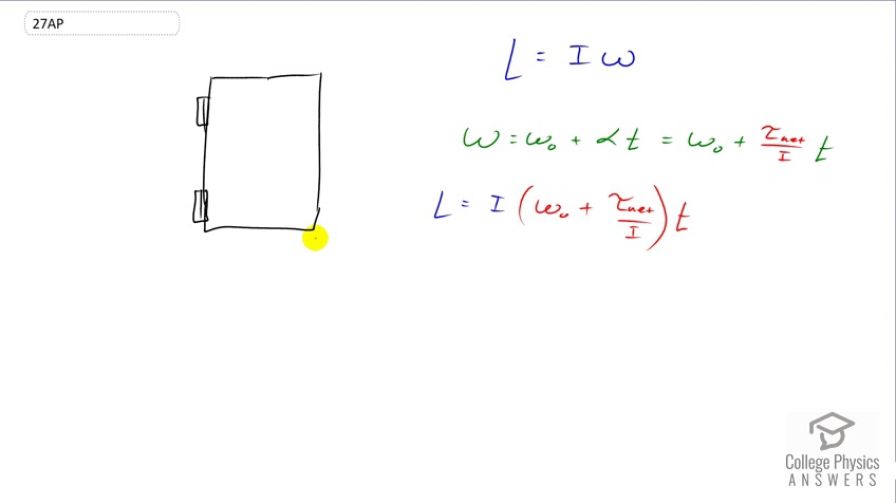Question
Describe a rotational system you could use to demonstrate the effect on the system's angular momentum of applying different amounts of external torque.
Final Answer
see video solution for explanation.
Solution video
OpenStax College Physics for AP® Courses, Chapter 10, Problem 27 (Test Prep for AP® Courses)

vote with a rating of
votes with an average rating of
.
Video Transcript
This is College Physics Answers with Shaun Dychko. We want a system that is rotational that will demonstrate changes in angular momentum based on different torques applied. So angular momentum is moment of inertia multiplied by angular velocity and we need to you know, make the torque factor show up in this equation somewhere in order to be confident that our angular momentum depends on the torque applied because we're trying to show that negative momentum changes with changes in torque. So angular velocity is going to be initial angular velocity plus angular acceleration multiplied by the time that this acceleration occurs. The angular acceleration is the net torque divided by the moment of inertia. So here we have our torque showing up in our formula now. We can substitute this in for omega and we have that angular momentum s moment of inertia multiplied by initial angular velocity plus the net torque divided by the moment of inertia of the door multiplied by the time that we apply this torque. Okay. So if we apply a force at this position here some distance away from the hinges we'll see it'll cause some torque. Let's say we apply a force F into the page, we'll put an x for the tail feathers of an arrow going away from you. So this is force going into the page at distance r from the hinges and that'll result in a torque of F times r and we'll see some angular momentum as a result of the you know, angular acceleration that that torque causes. If we take the same force and apply it at a distance r over two say -- this was torque one here and I'd say torque two is going to be the same force multiplied by r over two. We'll see a different angular momentum resulting from this torque. Likewise we could leave the position unchanged and make a comparison between two different magnitude forces and also see differences in angular momentum resulting from those different forces.
